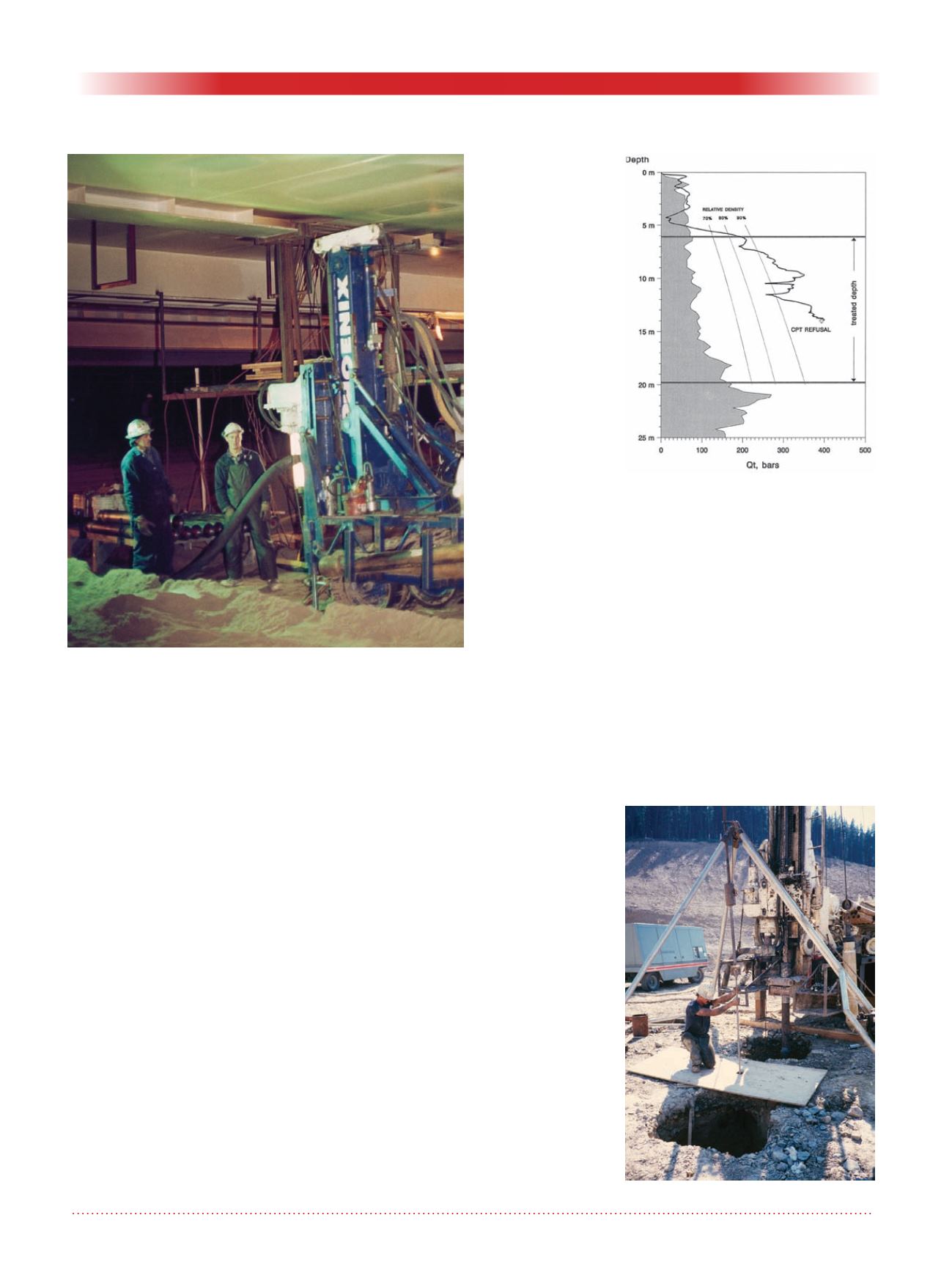
24
Geotechnical News • September 2019
GEO-INTEREST
designed air-vane motor. The drainage
element which was attached above
the vibrator consisted of a structurally
supported Johnson Well Screen. The
exhaust from the air motor was used to
blow seepage water out of the sys-
tem. Both elements measured about
1.5m (5ft) in length and were 190mm
(7½”) outside diameter. The deploy-
ment method involved pushing these
elements and similarly sized extension
pipes into the ground using a drill rig.
Then, when the assembly reached the
required depth to be densified, the air
motor was activated and the string
gradually withdrawn to the surface
again.
COGLA
preference was for the
PM
idea, whereas
GCR
wanted to use
blasting because it could be done
more quickly. It was during this
period of hesitation that
PEL
built a
prototype of the
PM
described above
and field tested it on the ship-impact
sand berm protecting the north pier of
Annacis bridge
in Vancouver.
The results were
good.
In the event, we
mobilized what
was necessary
to perform the
work using either
explosives or
vibro-drainage.
By then
COGLA
had been talked
into the blast-
ing option and
therefore that is
how the work
began, all going
smoothly until
instrumenta-
tion showed
that vibrations
in some steel
members were
exceeding their
structural limit
(13”/s) as soon
as charges were
detonated within 3.7m (12ft) of the
core walls. That prohibition meant
the sandfill most vulnerable to the
effects of ice pounding would be left
untreated. It was at this stage
GCR
asked us to deploy the
PM
to fin-
ish the densification job. This extra
work went without a hitch, with large
volumes of seepage water being dis-
charged from the machine. At the few
locations where CPT probes made a
direct hit on the top, buried 7m (23ft)
down, of one of the sand columns
created by the
PM
the results showed
relative densities generally exceeding
90% (Ref 3). One of these traces is
shown in Fig 3, where the background
shaded area shows the condition
achieved by blasting.
Black Dome Mine
During our field work on the upstream
face of the tailings dam at the Black
Dome goldmine in the Chilcotin area
of BC we observed something new.
Cylindrical holes appeared around
each location at which the
PM
was
activated, see Fig 4.
The tailings grind was 95% passing the
#200 sieve and accordingly its perme-
ability was quite low; in consequence,
there was very little seepage water
discharge. It is a geotechnical fact that
the quantity of flow is dependent upon
permeability, whereas the magnitude
of seepage forces is not. Therefore, the
amount of water discharge at ground
level is no indicator of the effective-
ness of the
PM
at depth.
Figure 3: CPT trace of PM results at
Molikpaq.
Figure 4: Craters at Black Dome.
Figure 2: Work space under Molikpaq deck.


